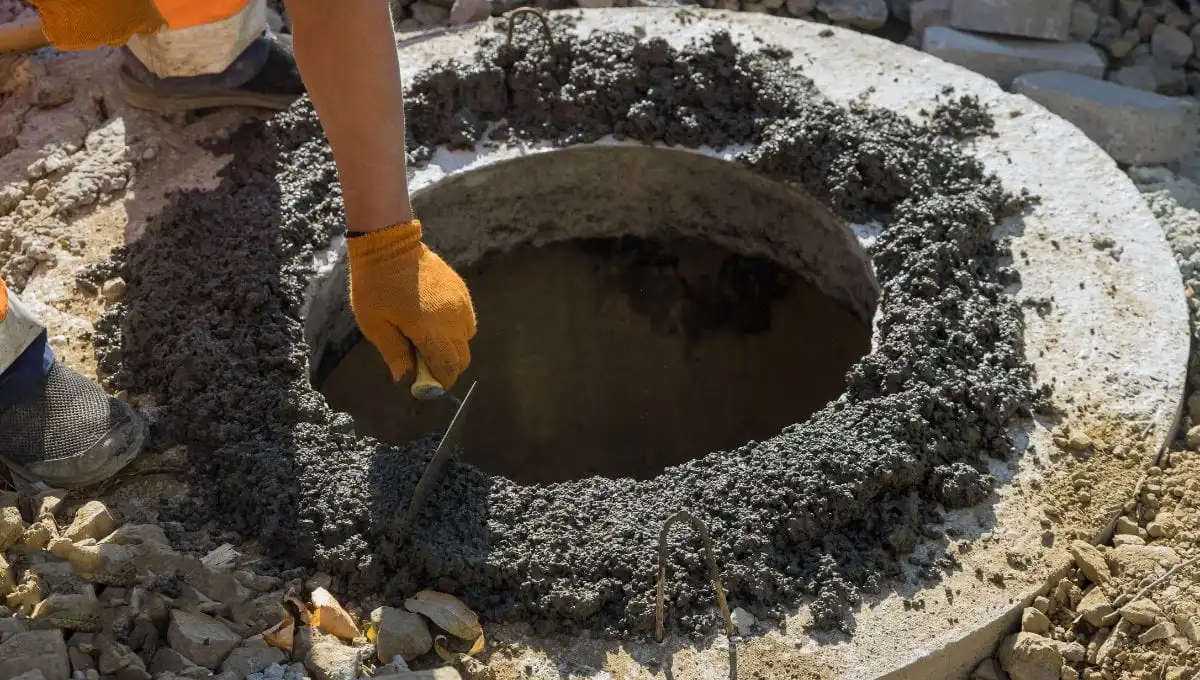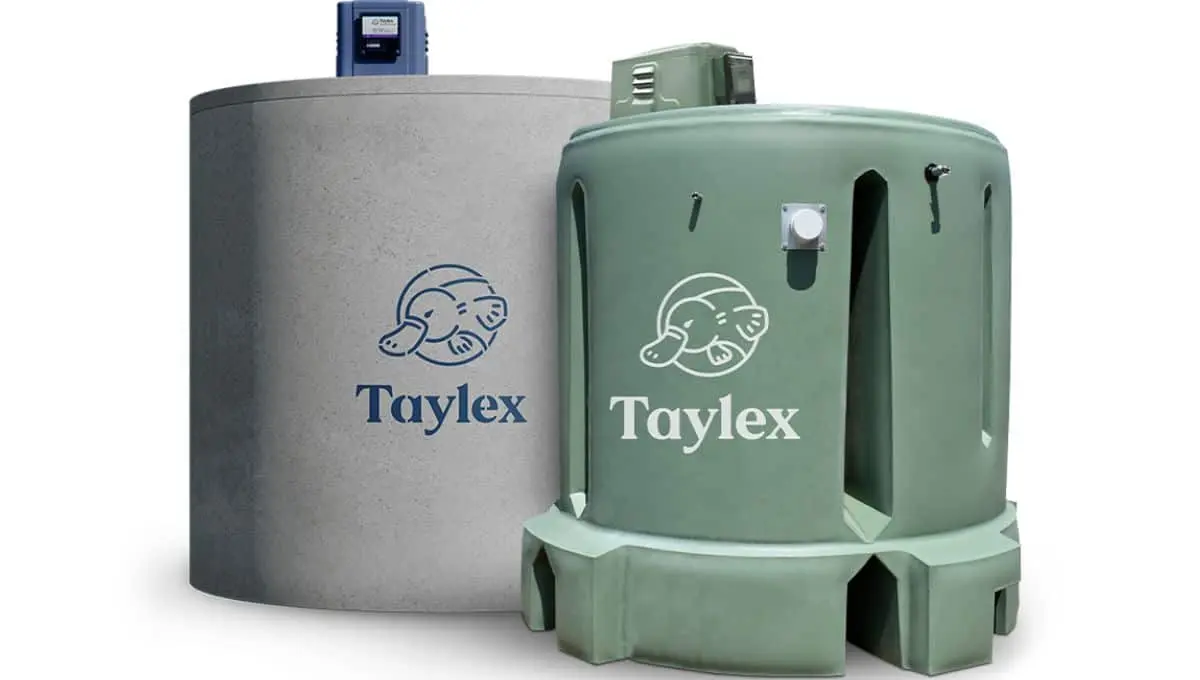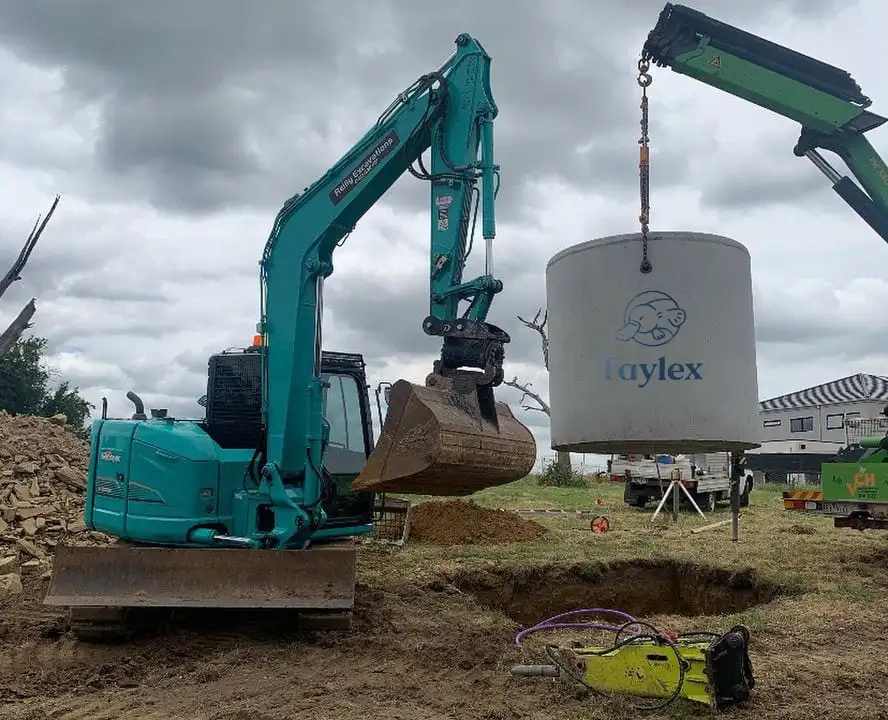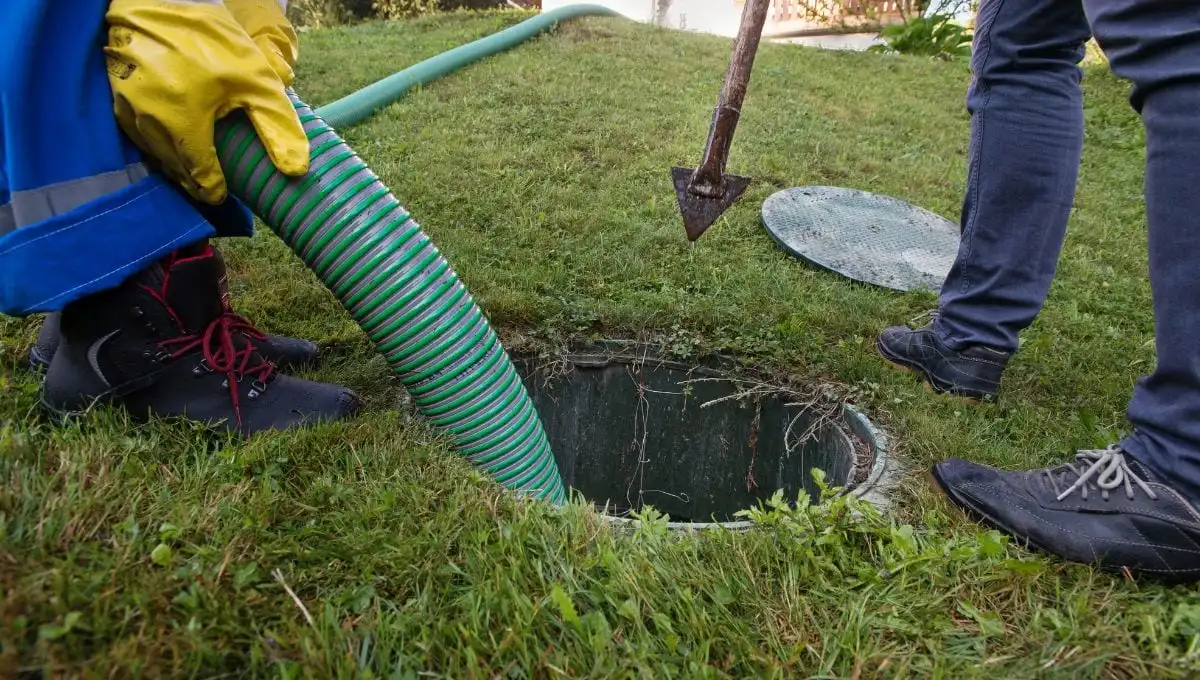
Living in rural areas necessitates effective wastewater management. A strong understanding of septic systems simplifies this process, making it achievable. This guide provides a step-by-step approach to septic tank installation. It highlights how it promotes a healthier lifestyle and contributes to a cleaner environment. Whether new to septic systems or looking to upgrade your current setup, this guide delivers valuable insights and practical steps for sustainable wastewater management.
Understanding the Septic Tank System
The septic tank system is integral for treating wastewater in regions lacking municipal sewage services. It utilises a tank where waste decomposes with the help of bacteria. The treated liquid effluent then flows into a drain field for further purification. This system is vital for managing household wastewater and protecting the environment. Regular maintenance is necessary for its longevity and efficacy.
Curious to know more? Dive into our comprehensive post on “What is a septic tank?“
Assessing Your Property for a Septic Tank
Proper property assessment is the first step towards a successful septic tank installation. The evaluation includes soil testing, percolation tests, securing necessary permits, and ensuring the system design complies with local septic tank installment requirements.
1. Soil Testing and Site Evaluation
Soil testing and site evaluation are critical in determining your property’s most suitable septic system. These initial steps help evaluate the soil’s water absorption capabilities, which influence the size of your leach field. Ideal soils for septic tanks include:
- Sandy or loamy soils
- Soil with a balanced mix of gravel and clay
During the site evaluation, consider the layout, slope, and proximity to water sources to ensure compliance with septic tank regulations and avoid areas with high water tables and steep slopes.
Percolation Tests
A percolation or perc test measures the rate at which soil absorbs water, which is important for designing the leach field. This test is essential for environmental protection and compliance with local regulations. It involves:
- Digging small holes.
- Saturating the soil with water.
- Measuring the water absorption rate.
Submitting the perc test results to the local council before the septic system installation is mandatory.
2. Securing Necessary Permits
Securing necessary permits is crucial. This process involves submitting detailed system designs and soil test results to local health or environmental authorities. The permit ensures your septic tank installation meets all regulatory requirements and avoids unexpected legal complications.
Choosing the Right Septic Tank

Choosing the right septic tank requires understanding the different types available and considering size and capacity based on your needs.
1. Types of Septic Tanks
Concrete:
These tanks are renowned for their durability and longevity. While sturdy and long-lasting, they are also heavy and challenging to install.
Fibreglass:
Fibreglass tanks offer a lightweight alternative to concrete. They are corrosion-resistant, making them ideal for long-term use, and they are relatively easy to install compared to concrete tanks.
Plastic:
Plastic tanks are lightweight and resistant to cracking. However, they may not be as durable as concrete or fibreglass options. Despite this, people often choose plastic tanks for their ease of installation and lower cost.
2. Size and Capacity Considerations
The right size and capacity of your septic tank depend on:
Size of the Household:
Larger households generate more wastewater, necessitating a larger tank.
Land Area:
The available land space influences the system’s layout and size. Considering local regulations and setbacks, sufficient tank and drain field space is essential.
Soil Absorption Capacity:
Assessed through percolation tests to determine the appropriate tank size.
Step-by-Step Process for the Septic Tank Installation

Proper planning and execution are essential for a successful septic tank installation. Here’s what the process involves:
1. Preparing the Site
- Site Evaluation: Assess the soil and groundwater conditions.
- Planning and Permits: Obtain necessary permits based on the design.
- Marking the Location: Clearly define where you will install each component.
- Site Clearing: Remove any obstructions from the installation area.
- Excavation: Follow the design plans to prepare the site.
2. Installing the Tank
- Tank Delivery: Ensure the tank is delivered safely to the site.
- Positioning the Tank: Place the tank precisely in the designated area.
- Stabilising the Tank: Secure the tank by backfilling around it.
Careful handling and precise placement are crucial to ensure the tank functions correctly and remains secure.
3. Installing Septic Pipes and the Drain Field
- Connecting Pipes: Install and connect the inlet and outlet pipes.
- Positioning the Distribution Box: Set up the distribution box correctly.
- Laying Drain Field Pipes: Ensure the pipes are correctly laid and covered.
Proper installation ensures efficient wastewater distribution and absorption.
4. Backfilling and Landscaping
- Backfilling: Fill in the excavated areas properly.
- Grading: Adjust the terrain to ensure proper drainage.
- Landscaping: Use vegetation to prevent erosion and beautify the area.
This procedure ensures proper drainage and covers the area with vegetation to prevent erosion.
5. Finalising the System
Complete the installation by ensuring everything functions as designed:
- Inspection: Conduct a final inspection.
- System Testing: Check for proper operation.
- Documentation: Maintain records of installation and maintenance guidelines.
- Maintenance and Monitoring: Set up a regular maintenance schedule.
Safety Considerations During Installation
When installing a septic tank, adhering to safety protocols is crucial to prevent accidents and ensure compliance with regulations. Here are the key safety measures:
- Excavation Safety: Use proper trenching techniques to prevent cave-ins and continually monitor soil stability.
- Handling Heavy Equipment: Utlise lifting equipment operated by trained personnel to ensure safe handling.
- Personal Protective Equipment (PPE): Always wear essential safety gear, including hard hats, safety glasses, gloves, high-visibility clothing, and steel-toed boots.
- Confined Space Safety: Maintain proper ventilation, utilise gas detectors, and have a strong rescue plan and emergency communication devices.
- Utility Safety: Before excavation, accurately Identify and label underground utilities to avoid disruptions.
- Installation Procedures: Install the tank on a stable, level base, ensuring correct alignment and sealing of the inlet and outlet pipes.
- Environmental Protection: Implement measures to minimise soil and water contamination during installation.
- Regulatory Compliance: Secure all necessary permits and adhere to all regulations. Schedule required inspections to ensure regulatory compliance.
Benefits of Installing a Septic Tank
Installing a septic tank is more than just a necessary utility for homes without access to municipal sewage systems; it brings numerous benefits that enhance both property value and environmental sustainability:
- Environmentally Friendly: Septic systems treat wastewater naturally, reducing environmental impact by recycling water and nutrients into the soil.
- Health Benefits: By preventing contaminants from entering water sources, well-maintained septic systems reduce the risk of waterborne diseases.
- Water Conservation: These systems recycle treated water, alleviating the demand for municipal supplies and helping replenish local groundwater levels.
- Increase Property Value: A property with a well-maintained septic system often attracts buyers looking for homes with sustainable utilities, potentially increasing its market value.
- Flexible Installation Options: Septic systems can be installed in various settings, from rural homesteads to suburban lots, and customised to fit different land sizes and soil conditions.
- Long-Term Investment: Installing a septic tank is an investment in your property’s infrastructure. It provides a reliable, long-term solution for wastewater management, ensuring peace of mind and potentially boosting resale value.
Maintenance Tips after the Installation of Septic Tanks

Proper maintenance is crucial for the longevity and efficiency of your septic system. Regular care prevents common issues and ensures that your system remains reliable. Below, we detail essential maintenance strategies that every homeowner should follow:
1. Regular Septic System Inspections
Conducting regular inspections is vital for:
- Early Problem Detection: Catching problems in the early stages can significantly reduce repair costs and system downtime.
- Smooth Operation: Regular checks help maintain the continuous and efficient operation of the system.
- Regulatory Compliance: These inspections ensure that your septic system adheres to local health and environmental regulations, potentially saving you from fines and penalties.
- Overall System Health: Ongoing monitoring supports the long-term effectiveness of your septic system.
2. Septic Tank Pumping
Pumping your septic tank every 3 to 5 years is essential to:
- Prevent Sludge Buildup: Regular pumping helps avoid clogs and backups, keeping your system running smoothly.
- Maintain System Efficiency: Removing solids from the tank prevents overburdening the system, ensuring it can effectively treat wastewater.
3. Promoting a Healthy Bacterial Environment
A healthy bacterial balance is crucial for breaking waste within your septic system. Enhance this environment by:
- Using Septic-Safe Products: Choose cleaning agents that are friendly to the bacteria essential to wastewater treatment.
- Avoiding Harmful Chemicals: Prevent the introduction of substances that could kill the beneficial bacteria in your tank.
4. Efficient Water Use and Natural Cleaning Methods
Reducing water load and using natural cleaners can significantly impact the health and efficiency of your septic system:
- Water-Saving Fixtures: Install fixtures that reduce water usage, easing the burden on your septic system and helping prevent overflows.
- Natural Cleaning Solutions: Employ eco-friendly cleaning methods such as baking soda and vinegar, which clean effectively without harming the beneficial bacteria in your system.
How Much Does a Septic Tank Installation Cost?
The cost of septic tank installation in Australia typically ranges from $10,000 to $20,000, and factors like location, tank material, and labour rates influence it.
Breakdown of Installation Costs
Understanding the costs involved in septic tank installation helps homeowners budget effectively. Here’s what to consider:
1. Tank Costs:
Prices vary depending on the material (concrete, fiberglass, or plastic) and size. Concrete tanks, known for durability, are generally pricier.
2. Labor and Excavation Costs:
The installation’s complexity and site conditions influence the costs. Excavation can increase expenses, especially in challenging terrains.
3. Permit and Inspection Fees:
Necessary permits from local regulatory bodies confirm that your installation adheres to local septic tank installation requirements and health standards. These fees typically include inspection costs.
4. Installation Equipment and Materials:
This includes expenses for machinery like backhoes and materials like pipes and gravel for the drain field, which are essential for a new septic tank installation.
5. Engineering and Design Fees:
If your property needs a customised septic system, professional engineering services ensure it meets all regulatory and efficiency standards.
Common Installation Mistakes to Avoid
When installing a septic tank, avoiding common pitfalls is essential for ensuring long-term functionality and preventing costly repairs. Here are key mistakes to steer clear of:
- Impact and Sharp Edges: Avoid impacting the tank or placing it near sharp objects that could puncture or damage it.
- Improper Modifications: Adding neck extensions to the tank or building a brick maintenance hole above the tank neck increases burial depth and can lead to installation complications.
- Excessive Burial Depth: Do not install the tank deeper than its designed depth, as this can jeopardize its structural integrity.
- Installation in High Traffic Areas: Installing the tank in areas that will bear heavy loads (like trafficked or sloped areas) without proper backfill design can damage the tank.
- Incorrect Backfilling Practices: Never backfill around an empty tank; it can lead to uneven settling or structural damage.
Long-term Maintenance Costs
Maintaining a septic system involves ongoing costs that are essential for its longevity and efficiency:
- Regular Pumping: Septic tanks should be pumped every 2 to 5 years to remove solids buildup. The frequency and cost of pumping depend on the tank size and household wastewater volumes.
- Potential Repair Costs: Over time, wear and tear, accidental damage, or system failures may necessitate repairs. The costs for these repairs can vary greatly, depending on the extent of the damage and the parts of the system affected.
Choose Taylex: Your Premier Partner for Superior Septic Solutions
With over fifty years of industry leadership, Taylex is your trusted partner for septic tank installation. Our team crafts durable, high-quality septic systems tailored to residential and commercial needs. We commit to excellence from the initial consultation to post-installation support, ensuring every system meets our high standards.
When you choose Taylex, you’re not just getting a septic system but securing a sustainable and efficient solution that benefits your property and the environment. Are you ready to enhance your property with a state-of-the-art septic system? Contact Taylex today and benefit from our comprehensive septic solutions. Let us help you make a wise investment in your property’s future.
Contact Taylex Now – Experience excellence in every step.
Septic Tank Installation FAQs
How much does a septic tank cost with installation?
Installing a septic tank costs $10,000 to $20,000 for a four-bedroom home. The cost includes a one-off fee for installation plus a yearly running cost with desludging every three to five years.
Can I install my septic tank?
Yes! You can install your septic tank. However, we recommend hiring a certified professional to ensure safety and compliance with septic tank installation requirements.
Is adding bacteria or enzymes to a septic tank beneficial?
Adding bacteria or enzymes is not necessary. Healthy septic systems already have sufficient bacteria to process waste effectively.
How often should a septic system be inspected?
Inspect your septic system every three years to maintain proper function and compliance with local health regulations.
What factors should be considered when choosing a septic system?
Consider the size of your property (which must have EPA certification), local environmental conditions, household size, water usage, and the quality of the septic tank and its components.
How often should a septic tank be pumped?
Pump your septic tank every two to five years to ensure it remains efficient and issues-free.
What are some maintenance practices for a healthy septic system?
Maintain your septic system by avoiding deep-rooted plants near drain fields, using water-efficient fixtures, and cleaning with natural solutions like baking soda and vinegar.